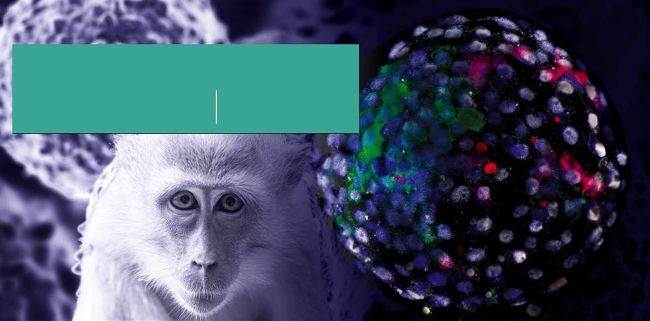2021 IN SCIENCE

Human cells were implanted into the embryos of long-tailed macaques (Macaca fascicularis)
This last year may have been one that most of us will remember as being dominated by feelings of uncertainty, social distancing and lockdowns, but there was no shortage of fascinating scientific discoveries. Here’s the proof…
HUMAN CELLS IMPLANTED INTO MONKEY EMBRYOS
A bold and controversial study, published in the journal Cell in April, reported how researchers at the Salk Institute in San Diego had inserted human stem cells into the embryos of monkeys. The embryos survived in the lab, outside of an animal, for up to 20 days – longer than in any similar experiment. The researchers also noticed communication pathways form, which may explain how human cells could better integrate with non-human cells in future experiments.
Work on this kind of hybrid organism, known as a chimera, is conducted for two main reasons. First, it could allow researchers to create ‘model’ human cells to study disease and new drugs, without breaching the ethical codes that prevent the same work being carried out on actual humans. Second, it could enable the growth of new organs for human transplant.
Researchers have tried the same thing with other animals, such as sheep and pigs, in the past, but the chimeras didn’t survive for long. Pairing the human cells with a non-human primate is both the reason it worked better (because we’re closer in evolutionary terms) and the reason the work is controversial.
“The closer your model gets to being human, well, the closer your model gets to being human,” said Prof Henry Greely, director for the Center of Law and Biosciences at Stanford University. He co-authored a response to the Salk study, laying out some of the ethical questions this kind of work raises.
“Xenotransplantation is one of the longterm goals here: to make human organs in another animal and use them for human transplants,” he said.
“That’s a big deal if you can pull it off. But on a journey of 500 miles, this is a step of one metre. The ethics side is exciting, but depends largely on what happens next.”
Greely believes that as long as you’re growing the embryos in a dish, it’s not a big deal, as far as ethics are concerned. But what if the work advances, and goes from being an embryo in a dish, to one growing in a womb, with a significant number of human cells, which continue to survive?
“That becomes a really interesting question. One is animal welfare: do you let these things be born? What are they? I don’t think they’re humans, but it’s hard to know. Let’s say one of them is born and has an enlarged skull and a big brain that looks pretty human. What do we do with that? I think a good starting point for society to come to is [to say]: ‘Yeah, we may want to play around with these, but we don’t want to implant them.’”
While this kind of biotechnology remains some way off, the field is developing rapidly and Greely says that existing bioethical and legal frameworks are struggling to keep pace. He’d like to see more ‘horizon-scanning’ groups, whose job it is to look at the direction of travel for a particular kind of research and ensure society is having the required ethical conversations in good time.